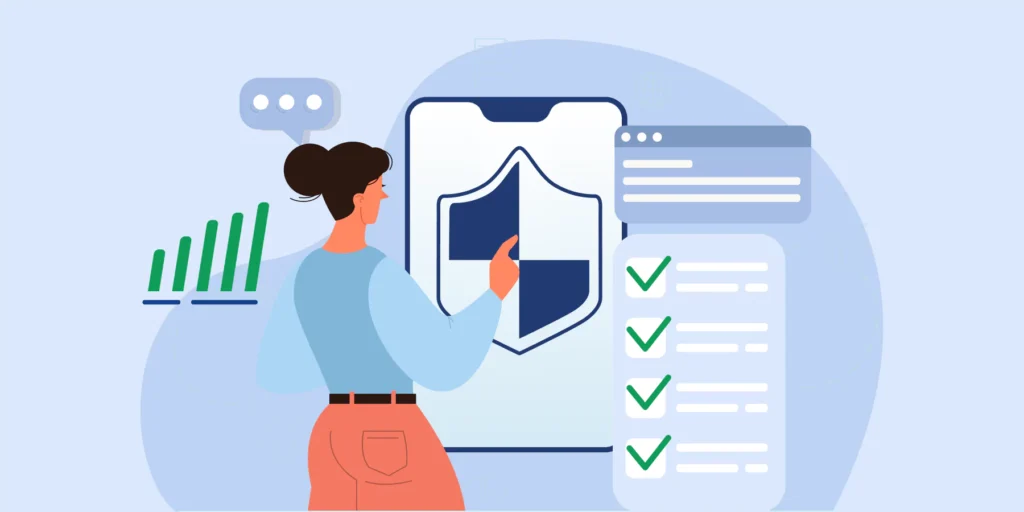Navigating the complexities of Google Workspace requires more than just a basic understanding of its components. For administrators, the right management tools are extremely important for maintaining an efficient, secure, and productive environment.
This guide explores the essentials of Workspace Management, comparing leading Google Workspace Management Tools. Furthermore, it offers detailed insights into their functionalities, benefits, and the transformative impact they have on workspace management.
The Essentials of Google Workspace Management:
The essentials of Google Workspace management involve understanding its core components and how they can be optimized for a business’s unique needs.
Key Components:
- User Account Management: Google Admins are responsible for creating and managing user accounts, ensuring each member has the appropriate access levels.
- Security Settings: Overseeing the security settings across all Workspace applications is crucial for protecting sensitive data.
- Compliance: Staying compliant with data protection regulations like GDPR is a critical aspect of Workspace management.
Optimization with a Google Workspace Management Tool:
- Customization: Making use of a Google management tool allows for the customization of Google Workspace to fit specific organizational requirements.
- Automation: Automating routine tasks like onboarding Google Workspace users and data backups saves time and reduces errors.
- Reporting: Detailed reports and analytics provided by Google management tools offer insights into usage patterns, helping in decision-making and optimization of resources.
Core Tools for Google Workspace Administrators:
Understanding these essentials forms the foundation for effective Google Workspace management. Accordingly, this enables Google Admins to leverage the full potential of these tools for their organization’s benefit.
Google Workspace Admin Console:
- Functionality: The Admin Console is the control center for Google Workspace, providing a dashboard for managing users, devices, security settings, and applications.
- User Management: It simplifies the creation and management of user accounts, group assignments, and access controls.
- Security Enhancements: The Console enables Google admins to set up security protocols such as two-factor authentication, manage passwords, and configure security settings for all Workspace applications.
Device Management:
- Device Management: Administrators can enforce security policies, track device usage, and remotely wipe data if a device is lost or stolen.
- BYOD Support: It supports Bring Your Own Device (BYOD) policies, allowing employees to use personal devices while ensuring that corporate data remains secure.
Google Vault:
- Purpose: Google Vault is designed for e-discovery and data retention, crucial for legal compliance and data management.
- Data Retention and Search: Google Admins can set data retention policies, search through data, and export data for analysis or legal proceedings.
- Legal Holds and Auditing: The tool allows placing legal holds on user data and provides audit reports for tracking activities within the Workspace.
Exploring Third-Party Google Workspace Management Tools
Overview of the Market:
The landscape of third-party Google Workspace management tools is diverse and constantly evolving. Consequently, these tools extend beyond the basic functionalities provided by Google, offering advanced features such as detailed analytics, enhanced security, and sophisticated user management capabilities.
Organizations turn to these tools for more granular control and customization of their Google Workspace environments.
Comparative Analysis:
- GAT Labs: GAT Labs is a technology company offering a suite of tools designed to elevate the management, security, automation, and auditing of Google Workspace environments.
- BetterCloud: Provides integrated management of Workspace and other SaaS applications, emphasizing automated workflows and policy enforcement.
- CloudM: Offers extensive data migration solutions, user management, and smart automation features.
- NetSkope: Focuses on security and compliance, with strong capabilities in data protection and threat intelligence.
For an in-depth analysis of top Google Workspace Management Tools, visit our detailed guide at The Best Google Workspace Management Tools. Explore our thorough comparative review to make an informed decision for your workspace needs.
Choosing the Right Tool:
Selecting the appropriate Google Workspace management tool depends on several factors:
- Integration and Compatibility: Ensure seamless integration with existing systems and full compatibility with Google Workspace.
- Scalability: The tool should adapt to organizational growth and evolving needs.
- Security: Prioritize robust security features to protect sensitive data.
- Cost-Effectiveness: Consider the total cost of ownership and the value added to the organization.
- Support and Training: Adequate vendor support and training resources are crucial for effective implementation and use.
- Data Loss Prevention (DLP): Tools that give the functionality of DLP can identify and protect sensitive information from being shared inappropriately.
Best Practices in Google Workspace Management
Policy Enforcement and User Training:
- Consistency in Policy Enforcement: Regularly updating and enforcing security policies ensures that all users adhere to the set standards, maintaining a secure Workspace environment.
- Importance of User Training: Educating users about best practices, security protocols, and efficient use of Workspace tools is crucial.
Furthermore, regular training sessions help mitigate risks associated with human error and keep users updated on new features or changes.
Regular Audits and Reviews:
- Ongoing Audits: Regularly auditing Workspace environments helps in ensuring compliance with internal policies and external regulations. It also aids in identifying any unauthorized access or data breaches.
- Security Gap Identification: Through audits, administrators can spot vulnerabilities and take proactive measures to secure the Workspace environment.
Setting Clear Goals and Policies:
- Establishing Management Objectives: Initially, define clear and precise objectives to effectively guide your Google Workspace strategy, ensuring alignment with the broader goals of your organization.
- Developing Effective Policies: Policies should cover aspects like access control, data management, and security protocols. Furthermore, they should be clear, achievable, and regularly reviewed to adapt to changing needs or challenges.
Conclusion:
In conclusion, the effective management of Google Workspace is vital for any organization seeking to maximize productivity and maintain robust security.
The right Google Workspace Management Tool can revolutionize how Google admins manage their digital workspace. As a result, they can implement more streamlined processes, enhance security, and gain valuable insights.
By understanding the essentials of Google Workspace, leveraging core and third-party tools, and adhering to best practices, admins can ensure their organizations are well-equipped to navigate the dynamic landscape of digital collaboration and communication. In doing so, they position their organizations at the forefront of efficient and secure digital workspaces.
Ultimately, the success in managing Google Workspace lies in choosing the right tools and employing strategic, informed approaches.
Insights That Matter. In Your Inbox.
Join our newsletter for practical tips on managing, securing, and getting the most out of Google Workspace, designed with Admins and IT teams in mind.







